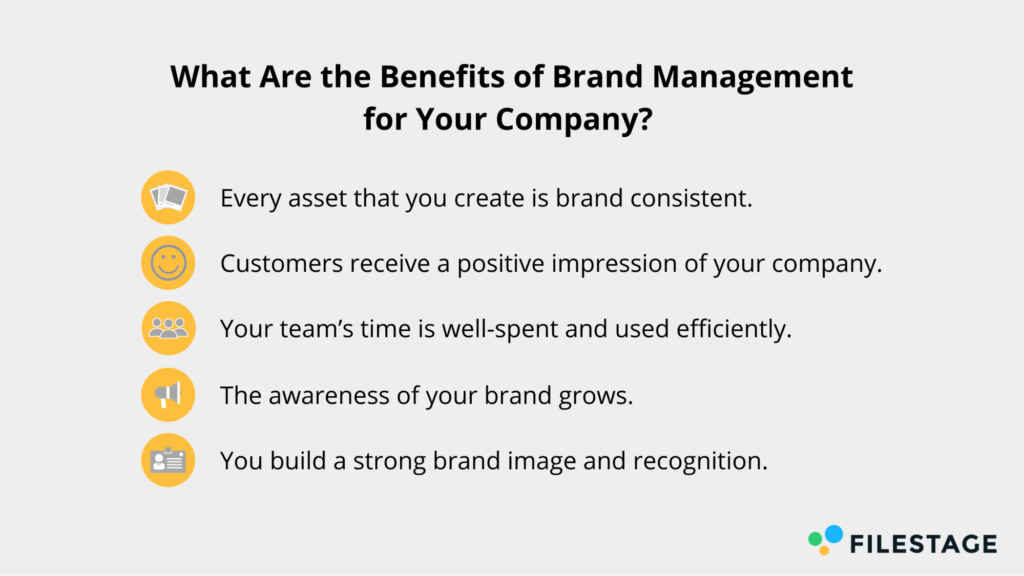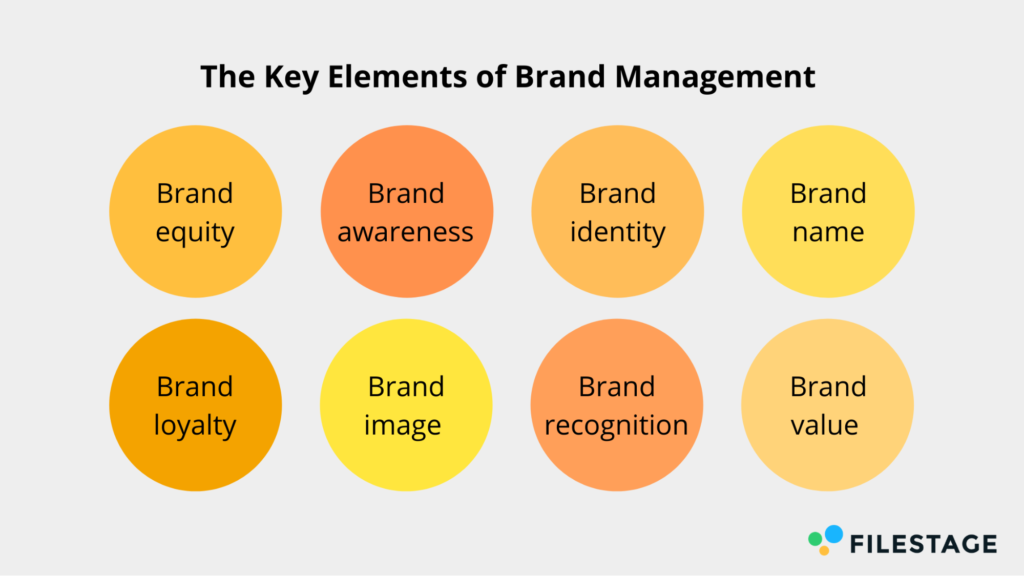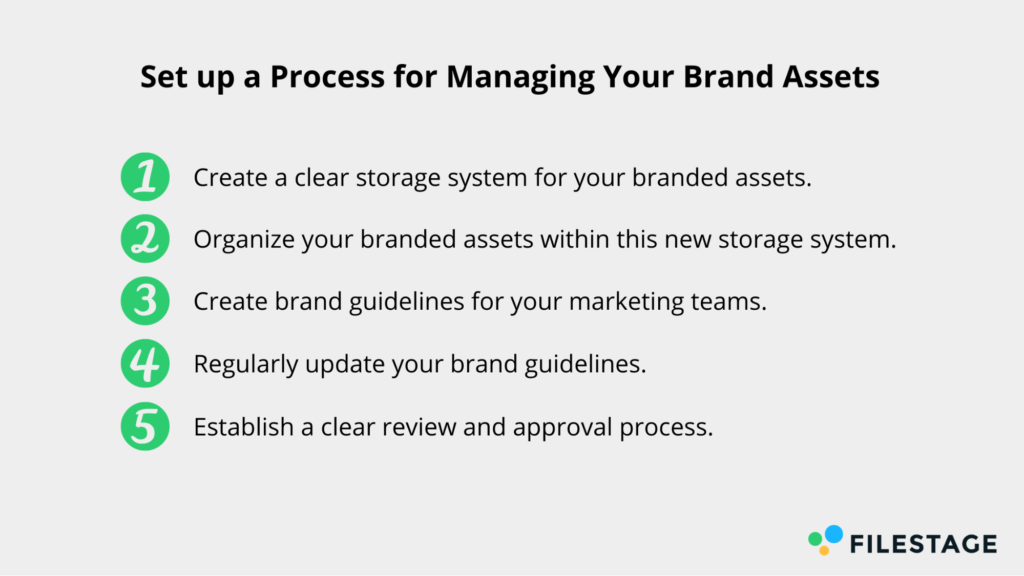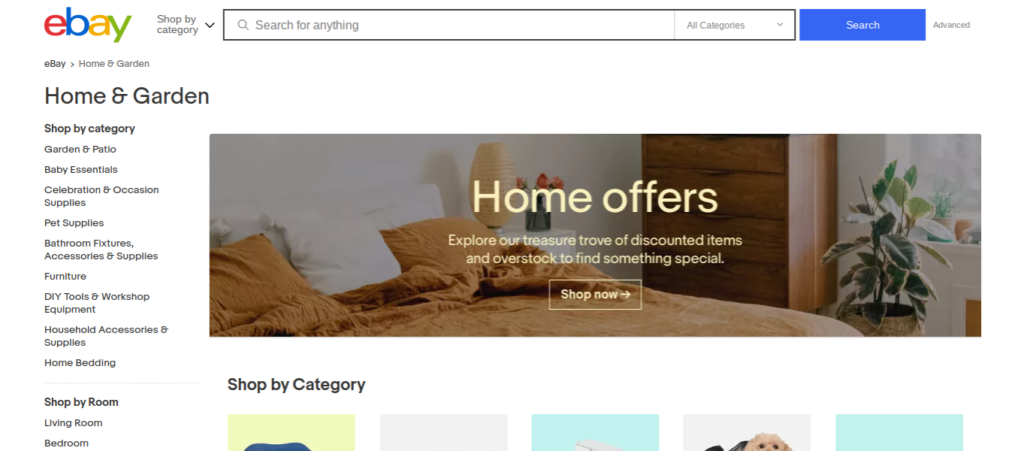When creating branding and marketing assets on a company-wide scale, there’s an awful lot of juggling to be done.
Balancing efficiency with aesthetics, consistency with imagination, and everyone’s individual contributions with your final judgement is a lot to manage. Branding is never as straightforward as a logo on a screen.
Successful brand marketing requires staying on top of all of your brand’s channels. That’s where brand management comes in – this technique helps companies to build and manifest a clear brand image in the minds of customers. And that is why brand management is an essential strategy for any company that is serious about marketing.
So, in this article, we’ll be revealing all the secrets for a foolproof brand management process.
What Is Brand Management?
Brand management encompasses the strategy and the process of handling all of your branded content. It helps create consistent content that can be easily connected with your brand and therefore forms a clear brand image in customers’ minds. This also includes monitoring each and every one of your branded assets.
Brand management also necessitates careful and consistent use of branding to achieve its directives – which are often increasing outreach and attracting more customers – through each new piece of marketing assets that is created.
It encompasses all manner of branded assets, from email campaigns to posters, ads of your products and services, blog posts, web pages and social media channels.
Brand management works by ensuring that all of your content is brand consistent in order to best convey your desired company message to your audience.
Why Is Brand Management Important and What Are the Benefits for Your Company?
Brand management is a complex process to master as it requires a conscious and well-thought-out branding strategy that treats these assets as a single entity, rather than separate pieces.

Brand management builds a clear brand image that is associated with the products and services of the company, thereby increasing the brand’s recognition. Marketers manage the company’s branding by boosting brand awareness amongst the target market, maintaining customer loyalty, and ensuring that the brand continues to be associated with positive perceptions.
This strategy is essential for any company intending to either grow or retain its customer base. A solid brand management strategy ensures that:
- Your brand demonstrates an adherence to your company values.
- Every asset that you create is brand consistent.
- Your customers receive a positive impression of your company through branding which denotes a professional, modern and innovative business.
- Your team’s time is well-spent and used efficiently.
- The different skill sets of each of your team members are recognised and used advantageously.
- Positive awareness of your brand grows.
- Your existing customers are more likely to remain loyal to your brand.
- New customers are drawn into your brand, and you gain more sales.
- You build a strong brand image and recognition.
The key to achieving this through your brand management strategy lies in two things -– consistency and remaining on-brand. These two elements are vital; as you create this united design amongst your marketing materials, they ensure that your marketing is seamless and collaborative.
Brand management can dramatically improve the process of marketing teams because it enables the quicker creation of better, more effective content. By promoting a more organized marketing process, it saves marketing teams considerable time.
Through this strategy, effective and successful pre-made elements (such as color palettes, logos, images, etc.) are re-used. This is advantageous to the marketer in terms of time and cost, and it also helps achieve consistency in your marketing assets. As a result, your new content will not stray from your existing branding or your company’s core principles.
The Key Elements of Brand Management
As you can see, brand management is a topic covering a wide variety of different assets, jobs and elements.

Naturally we’ll be covering a lot of different terms, So it would be handy to start out by defining a few key terms. Below, you’ll find some definitions to the most important terms used in brand management:
Brand equity
Brand equity is the totality of the different elements that shape how valuable customers believe your company to be. This belief is influenced by factors such as previous experiences with or purchases from your company, and what customers associate the company with in their minds.
For example, customers may perceive a clothing company as luxurious based on the fact that they previously visited the online store, and it was easy to navigate, provided an enjoyable user experience, stylishly designed, and had a quick load speed.
This metric is important, as stronger brand equity correlates to a high market share as well as high-profit price points for your products.
Brand awareness
Brand awareness measures how recognizable your brand is in the marketplace. This measurement helps marketers to assess the likelihood that a member of the company’s target market will recognize the company branding.
With strong brand awareness, individuals will be more likely to think of your company when they look to purchase the product or service that you offer. A high level of brand awareness can be achieved by establishing a popular social media channel for your company, for example.
Brand identity
Brand identity is the overall look and style of your company’s branding that is shaped by a wide range of different elements. The identity can be made up of everything from your color palette to logo positioning and design, and your style of photography. It is important that a company achieves a strong brand identity because the stronger the brand identity is, the more likely it is that your assets will be consistent. Plus, you’ll need an ocassional brand refresh to make sure your brand identity accurately represtents the growth of your brand.
Brand name
Your brand name is the key element which distinguishes you from other companies in the same market. It enables you to stand out, and allows your customers to recognize you against your competitors. The more memorable your brand name is, the more likely your customers are to remember you.
Brand loyalty
This trend pertains to the likelihood that your customers will repurchase from your company. Brand loyalty indicates how often customers return to your store and stand by you over a period of time.
This gives marketers an insight into various factors such as the quality of your products, the strength of your website’s user experience, how engaging your brand marketing efforts are, and how on-trend your branding is.
Brand image
Brand image is the overall impression that current and potential customers have of your brand. It covers your brand’s logo, personality and any other visual content that falls under your company’s branded assets.
Brand image ties in with the impression that the target market holds of your company – as a result, it is hugely important. A strong brand image would be supported by a clear, sleek and entertaining online appearance, for example.
Brand recognition
Similar to brand awareness, brand recognition measures how likely members of the general public (particularly those who would constitute your target market) would be to recognize your logo if they saw it removed from its immediate context.
This concept covers the uniqueness and success of your brand’s personality as a whole. It could also be applied to other branded elements, such as social media posts, packaging, or even jingles. For example, if you were to hold a session of market research, how often did an individual recognize your company after seeing your home-delivery packaging?
Brand value
Brand value gives an approximate monetary figure for the worth of your brand in the event that you decided to sell it. By measuring brand value, marketers can assess how known their company is, how positively it is perceived by customers, and generally how successfully it performs in the market.
How to Create a Brand Management Strategy
We mentioned previously that brand management involves a huge number of different types of branded assets. It is essential that you are aware of all the different branded assets that your company creates, and that each of these is included in your strategy. These assets will include everything that your audience sees of your brand.
As such, a brand management strategy will cover:
- The name of your brand
- The primary version of your company logo
- Secondary versions of your company logo (for example, your design guidelines may state that you use a different color variation of the logo for Instagram).
- Your branding’s color palette
- The fonts and typography that you use, for each type of asset. For example you may have a different font for your campaigns as opposed to the one for blog posts.
- Letterheads
- Photography
- Videos
- The tone of voice that you use in your blog posts, email campaigns and social media posts.
- Any packaging or labels that your company uses for its products.
In order to create a strategy that successfully encompasses all of these assets, you will need to ask yourself some key questions.
What message are you attempting to convey?
Firstly, align your brand management with your marketing strategy. In order to do this, use storytelling techniques in your branded ad campaigns. Consider what message you are attempting to convey to your audience through your branding.
This could be communicating a clear ethos statement (such as environmental sustainability), engaging your customers with fun and dynamic content, or reinforcing the fact that you are a dependable, tried-and-true, family-run business. No matter what message you choose, you are attempting to establish an emotional connection to your audience that helps them to engage with your brand.
Your brand management then aligns with your marketing strategy by isolating the priorities inherent within your marketing efforts and then ensuring that you stick by these principles consistently. Such core company values need to be reinforced in every asset, and brand management enables you to do this across the board.
What is your brand’s unique selling proposition?
As a result, the best way to undertake brand management is to emphasize what makes your company unique, and allow that unique selling proposition (USP) to shine at every opportunity. These thoughts regarding your brand positioning should then help you to recognize what draws your customers to you rather than to one of your competitors. From there, you can create consistently on-brand content that is far more likely to increase sales.
For example, a typical brand management strategy would specify the usage of key components like a logo and brand name. Then, the process may identify that the company’s commitment to being environmentally friendly was one of the main factors attracting customers to the brand. Furthermore, this message of environmental friendliness was selected as a core principle for the company. Accordingly, every piece of content that the brand created would need to adhere to this principle in order to adhere to the company’s brand identity.
How can you reinforce your brand’s uniqueness in consumers’ minds?
This would involve a wide variety of different elements. For example, the brand management strategy could specify that all materials would adhere to a green and blue color palette. Furthermore, in order to build branding that continued to attract the target market, the company’s social media posts could feature high quality natural photographs, partnered alongside written copy demonstrating a clear eco-conscious focus.
In order to put this example into practice and show you how it can apply to your own company, we move on to our guidance for setting up this process for yourself in the next step.
How You Can Set Up a Process to Manage Your Brand Assets
At this point, you can’t not be convinced that brand management is a solid idea. So, now that you’re on-board with the idea, this is the point in the article where we’ll show you how to introduce it into your own company, and how a typical brand management strategy operates in practice.

1. Create a clear storage system for your branded assets.
In this step, you will establish a document management system for your marketing materials. This will require a network of folders and files for your digital assets, and a storage system for your physical branded assets, too. You may wish to invest in a specialist piece of software to assist with your digital asset management.
2. Organize your branded assets within this new storage system.
Ensure that all folders are clearly labelled and well-organized so that each asset is easy to locate. For example, if you do need to keep any older versions of your logo, make sure that these are clearly marked as ‘outdated’, and store them well away from the current versions of your logo.
Organization necessitates a clearer process of brand asset management (BAM) for your physical and digital assets. By doing this, you will save yourself and your team time (and confusion!) in the long-run.
3. Create brand guidelines for your marketing teams.
This could be created in the form of a style guide. This critical document provides exact instructions on how each asset should be used. For example, if one of your team members was creating an email campaign, the style guide should specify the version of your company logo to be included in the email and its positioning.
There should also be clear details about the type and size of font, a color palette, and information about the tone of voice for the copy itself. Check out our article about brand guidelines to learn how you can create your own guide.
4. Regularly update your brand guidelines.
It is imperative that this document is kept up-to-date. Make sure the brand guidelines are applicable to your current marketing strategy so that the guidelines become the go-to point of referral for any member of your team.
For example, if you decided to incorporate a more casual tone of voice in your website’s written content, then this updated brand personality would need to be noted in your brand guidelines. Therefore, make re-reading your document and updating it with any new additions or decisions a part of your regular routine.
5. Establish a clear review and approval process.
Brand management requires managers to review and approve each new asset. This will ensure that assets fit together as a consistent set of materials. Plus, it will guarantee that every piece of content you publish is of high quality and free of mistakes.
When it comes to the review and approval process, an online proofing software like Filestage can save your team a lot of time and effort. The tool helps you to set up and establish a clear and standardized review process that every new asset needs to go through before it can be published.

Within this process, managers and invested stakeholders can review the asset, leave comments directly in the file and even discuss this feedback with each other. After the content editor has adapted the asset based on the suggested changes, the reviewers can have a final look and approve the file.This process ensures that each new asset is consistently on-brand and of the highest quality.
How does this help you to create a successful brand?
All in all, the process detailed above is the best way to undertake brand management. It will help you to manage your brand assets at all stages – including previous (now outdated) materials, current versions, and new materials which are being created.
Furthermore, brand management keeps all team members in the loop and provides them with clear, regularly updated information about how they can keep their content on-brand.
By following these steps, it is easy to incorporate brand management into your processes. The main thing is that you clearly communicate what you are doing to your entire team.
Update them on what you are doing, why you are doing it, and how they can adhere to these new regulations. This will ensure that the transition towards a more consistent, structured and strategic brand management process goes as smoothly as possible.
5 Best Practice Examples From Brands with a Great Brand Management Strategy
If you’d like some extra pointers on how to establish your new brand management process, take inspiration from some great international examples. These business giants have created undeniable brand value for their companies thanks to undeniably effective brand management strategies.
Apple

It only makes sense to start off with this branding giant. Apple’s brand management strategy has enabled it to carve itself a position in the tech market as one of the most popular brands in the world. With every new release, Apple proves itself to be a creator of gadgets that remain incredibly sought after.
Apple’s branding has always spoken of the company’s commitment to modernity. It has cleverly presented Apple at the forefront of technological developments – an innovator and a game changer. This encompasses everything from its sleek minimalist packaging to the iconic stage-based launches of new products as originally hosted by Steve Jobs.
Coca-Cola

The bright colors and iconic font of Coca-Cola means that it is immediately recognized by countless people all over the world – there’s a reason why they have such a vast number of loyal customers. You can see how those core colors of black and white with very specific shades of red and green have been kept strictly consistent for years and across all marketing channels.
While their layout may have been altered for different products (for example, the original drink has a red background and white text, while the “Zero” version uses a black background and red text), there is still so much consistency between this range that you are left in no doubt that they belong to the same brand.
eBay

The strong brand identity of eBay is a success clearly facilitated by the company’s brand management strategy. By its nature, eBay needs to attract a large number of users as buyers and sellers (or both) on the platform. The quick, snappy headline of “By, Sell, eBay” is indicative of the efficiency of this process, and it is this user-friendliness which the company showcases at every opportunity.
Another great example of brand management is eBay’s recent TV commercial, where a couple chop and change different elements of their new house in the form of jigsaw pieces to form their ideal home. These different elements have all been either bought or sold on eBay, and the house looks completely transformed in a matter of seconds.
EE (network in the UK)

This new giant of the broadband and mobile network scene uses a brand management strategy that brings a fun and youthful approach to marketing. It is responsive and imaginative (yet still highly consistent) across a variety of different marketing channels.
EE uses modern branding elements such as brand ambassadors (Kevin Bacon’s face is included in a huge proportion of its marketing materials, and he has become pretty synonymous with the brand) and a high focus on social media marketing. Social media has been a huge investment for EE; as a result, the brand has over 44,000 Instagram followers, compared to Virgin Media’s 26,000 and Vodafone’s 33,000 (as of February 2021).
Looking for social media inspiration? Here’s our roundup of the best brands on Instagram.
Marks and Spencer

Whenever they hear of Marks and Spencer, pretty much everyone in the UK thinks of the brand’s iconic slogan “this is not just food…”.
As a result, the brand has been firmly cemented with its associations with quality, luxury and decadence. That can only be a good thing for the brand. Interestingly, operating alongside the brand awareness that their commitment to quality has brought them, the brand has also experienced a surge in recent success in sales of their children’s range of food products and services.
Most notably, this includes their Percy Pig and Colin the Caterpillar product ranges for children. These treats are highly popular amongst children and adults alike, as they combine a high quality approach (which stands out in the market of overly sugared and cheaply made children’s sweets) with fun branding and delightfully inventive treats. As a result, they have been a big hit on social media, all while staying true to the core Marks and Spencer brand identity.
5 Brand Management Software Solutions to Simplify Your Workflows
Establishing an effective brand management process is not something that can be done overnight. Without a doubt, managers can build brand consistency more confidently and strategically with the assistance of specialist software.
So, to help you get started with your new marketing brand management process, we would recommend that you utilize one of the tools below.
Filestage

Filestage is an online proofing software, which allows teams to set up an efficient review and approval workflow for all file types like PDFs, images, videos and audio files. Since the approval step is an important part of any solid brand management process, it is essential that your entire team can easily manage this step.
With Filestage you can share, discuss and approve files with your colleagues and external stakeholders on one centralized platform. Receiving and collecting the feedback from all reviewers in one place saves you a lot of time since you can easily discuss changes and ask questions without the need to write multiple emails. Filestage also makes it easy to keep track of your projects and the status of each file.
BrandMaster

BrandMaster is a brand management platform specifically designed for the use of marketing managers. This specialist graphic design project management tool provides a highly efficient centralized system for the storage and sharing of digital assets. This capability can be used by marketing teams to share and collaborate on the company’s marketing content and ensure that everything is kept in-line with the brand strategy.
BrandMaster is designed to be scalable so that it can suit the requirements of companies of any size and scope. Furthermore, the tool can be used as both a cloud-based platform (accessed via computer), or on the go through Android or iOS mobile devices.
Frontify

Frontify is a brand management tool that provides a wide range of functions in one piece of specialist software. It provides branding teams with everything from a centralized storage location for your digital assets to assistance with the creation of digital brand guidelines and design templates.
This cloud-based software is ideal for growing brands that are looking to develop their company’s brand and evolve their marketing so that they tap into their target market more effectively. With Frontify’s intuitive design-orientated software, teams can build brand awareness with consistent, attractive and united assets.
Bynder

Bynder is a tool designed for brand managers, marketing teams and consultants. It provides a number of different collaboration tools, including a centralized storage system and online editing functions. This digital asset management software promotes a more organized and professional brand management process, while facilitating efficient collaboration on marketing materials across different team members and external invested parties.
Users can engage in collaborative edits in real-time, as well as use auto-formatting for different file types in order to save time and ensure consistency.
Brandworkz

Brandworkz can be used to assist with the branding and marketing of companies in a wide variety of different industries including finance, education, tourism and healthcare.
This software facilitates a more efficient artwork management for both individual pieces of work and larger scale projects. It promotes a more streamlined workflow in which the progress of a new asset can be tracked at every stage. For instance, contributors can leave their feedback in handy online annotations for the creator to view and act upon.
Furthermore, Brandworkz’s intuitive Logo Finder tool ensures that content creators only ever use the relevant and up-to-date version of the company logo in new assets.
Conclusion
Brand management is the best step to take towards boosting your brand value, brand awareness, brand equity, and brand loyalty.
Strategic brand management is a process that enables managers to create a simple, efficient and remarkably effective branding strategy, taking you several steps closer towards achieving company goals without requiring extra time or funds.
It may sound too good to be true, but when you consider what makes big brands so successful, it becomes clear just how important it is to establish consistency across your branded materials.
And the key to achieving effective brand management? It all lies in a more careful management of your branded assets.






